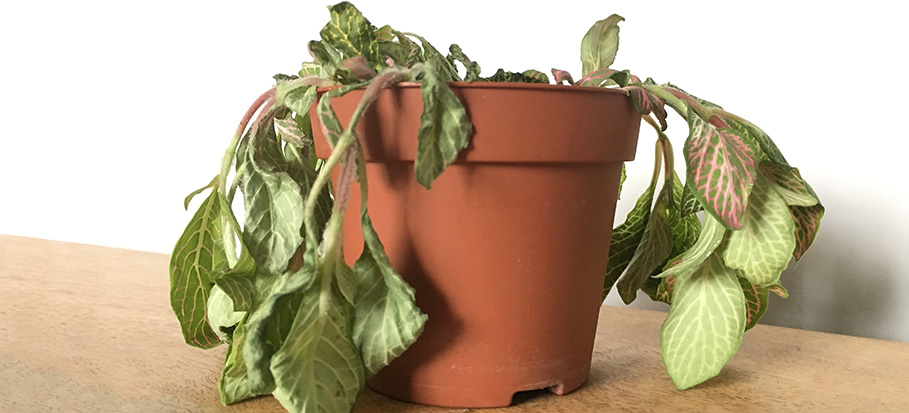
This blog post is contributed by Sarah Gerrard Jones, an expert on houseplants.
Are you a serial houseplant killer? Want to know how to turn those black fingers green? Or maybe you want to learn how to bring a plant back to life?
The good news is that 90% of houseplant fatalities are easily preventable. Recognising your plant’s symptoms and attributing them to a cause can nip a potential disaster in the bud.
- Overwatering
- Lack of water
- Houseplant pests
- Dry air
- Light
So, if you:
- Want to know what makes plants die;
- Are looking for ways to prevent it from happening;
- Are curious about the signs of dying plants,
Then read on! This article is for you.
There are many possible reasons that can account for the death of a houseplant. These are amongst the most common:
Overwatered plants
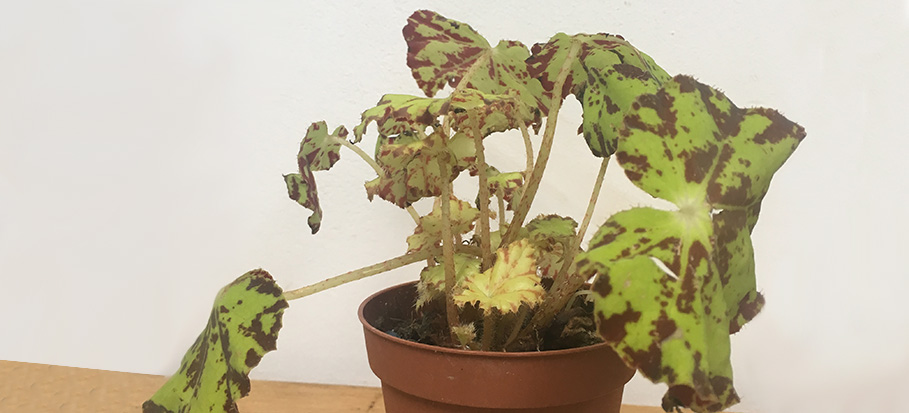
Overwatering kills more plants than any other cause. Watering too much or too frequently is essentially slowly killing plants with kindness. Too much water rots the roots, and without a functioning root system, the plant will eventually die.
It’s easy to confuse the symptoms of overwatering with underwatering because we often associate drooping leaves with drought. But in the case of an overwatered plant, the leaves turning yellow and drooping is a sign that your plant is drowning.
Solution
How much we should water our houseplants varies from species to species. Succulents and cacti generally don’t require as much water as tropical, humidity-loving plants. There are a few exceptions to this rule, so make sure you always read up about your houseplant.
Also, always reduce the amount and frequency of watering during winter. In the colder months, our houseplants aren’t actively growing, so they require far less water than they do in the summer.
A good indication of when to water your houseplant is to put the length of your thumb into the soil and see if it feels dry or moist. If the soil is at all moist 1–2 inches down from the surface, that would be enough. If it’s totally dry, go ahead and water it.
Lack of water
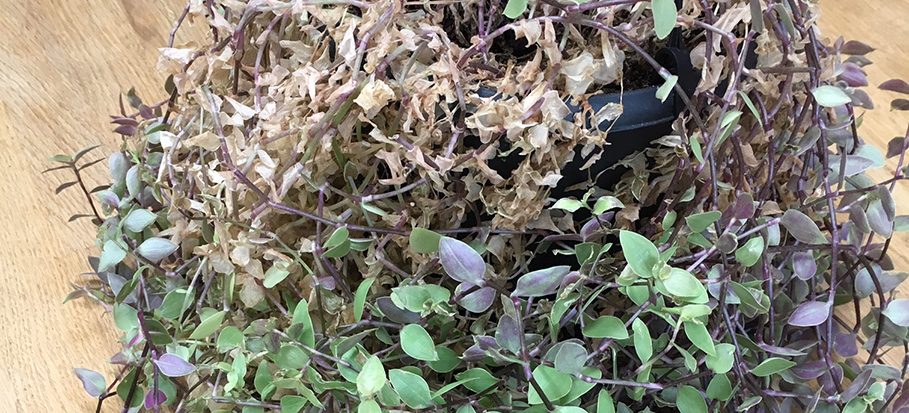
Underwatering your plant can be just as life-threatening as overwatering. However, it’s easier to bring a thirsty houseplant back from the brink than a waterlogged one. Some types will give you warning signs before they reach the point of no return. If you spot wilting leaves or dry, brown leaf tips, it’s possible you can reverse the damage by giving the plant a drink.
Solution
Lift up your plant by the pot and feel it. Does it feel heavy or light?
If it’s light, it’s likely the soil has totally dried out and needs soaking. If the soil has contracted, leaving a gap down the sides of the pot, it’s best to immerse the whole pot (not the plant) in a bucket of water. Leave it to soak for 10 minutes, then transfer it to its draining saucer.
Plant pests
Occasionally, houseplants come under attack from pests, and these can be extremely difficult to tackle. Diagnosing which pest your houseplant has contracted isn’t always straightforward, but there are various signs that may give you clues about what’s going on.
These are the most common houseplant pests and how to deal with them:
Mealy bugs
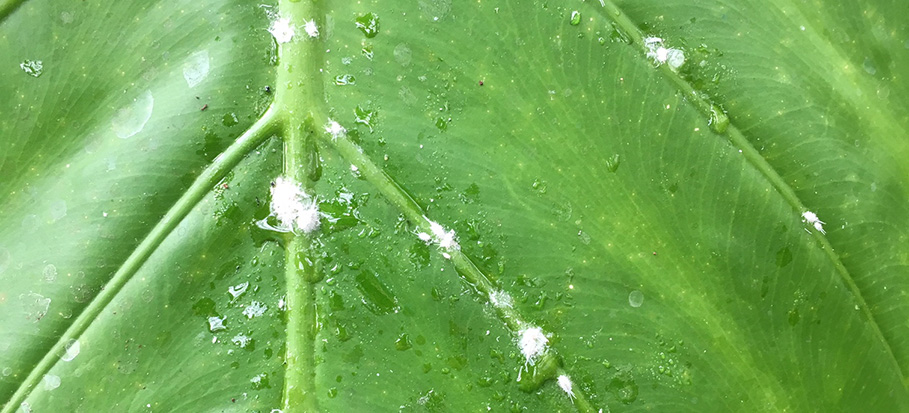
Mealy bugs are sap-sucking creatures, which look like tiny, white woodlice. They excrete a substance that makes areas of the plant sticky. The plant will tolerate small colonies, but an infestation will cause it to weaken over time, resulting in curling, yellow leaves, which will eventually die.
Solution
Neem oil is a natural pest deterrent. It’s inexpensive and safe to use around pets and children.
- Mix 1 tsp of neem oil in a spray bottle with a little warm water.
- Add 1 tsp of washing-up liquid, and then mix the solution with 500ml of cold water.
- Spray the whole plant on the top and bottom of the leaves.
- Repeat this process until the mealy bugs have vanished.
Spider mites
These are so small, they are invisible. However, you will see webbing over the soil and on the leaves. Stippled, yellow, weak leaves are the first tell-tale signs that your houseplant has been infested by these tiny assassins.
Solution
Use the neem oil solution mentioned above. Spider mites are trickier to banish, though, so make sure that you spray all of the plant and soil every 3–5 days for a few weeks.
Thrips
These black, winged insects burrow into the leaves, suck up the plant juices and leave behind noticeable scarring. The leaves may turn pale and silvery, then die. Injured plants can also become twisted and discoloured.
Solution
Thrips are a houseplant owner’s worst enemy, as they fly from plant to plant. Isolate the infected one and use the solution mentioned above.
Neem oil doesn’t kill the insects immediately, but it causes them to stop feeding on the plant, so they eventually die. Suspend sticky flypaper from the plant, as this can also be effective in preventing thrips flying off and attacking other pots.
Scale
Scale are brown, round or oblong, shell-like bugs, which attach themselves to the stem and the undersides of leaves. They excrete a honeydew-like substance, which turns into sooty mould. It can be seen below infested leaves.
Solution
If you’re not too squeamish, you can pick scale off with your fingernails. I also recommend spraying the plant with a natural solution to kill any bugs you might have missed and prevent them from returning.
- Mix 4 tbsp of washing-up liquid into one cup of vegetable oil.
- Mix one part of that mixture with about twenty parts of water and spray the solution onto the plant. This oily mix suffocates the scale and also protects it from becoming reinfested.
This solution is also effective on mealy bugs. Keep the rest of the mixture in a spare bottle for the future.
Dry air
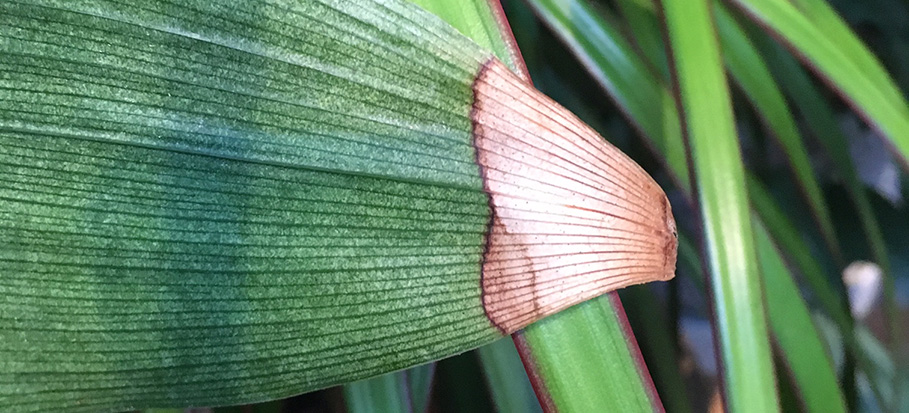
The majority of houseplants (excluding most cacti and succulents) originate from tropical climates, where humidity is high. Our homes are very dry, especially in winter, when we turn the central heating on. Many of the most common houseplants need humid air in order to thrive.
Plants lose moisture when the surrounding air is dry. Symptoms of this include curled leaves and dry leaf tips, which are similar to the signs displayed when a plant is thirsty.
Solution
If you are committed to creating the perfect environment for your plants, then I suggest investing in a humidifier and leaving it on throughout the winter months, when the air is driest.
Light
All plants need light to live. Very few can thrive in darkness, so making sure your plant is receiving the correct amount of light is paramount to its health and longevity. A lack of sunlight means the plant cannot produce enough food for itself and is starving. The symptoms, in this case, are small, pale leaves and slow growth.
We can also cause our houseplants problems by exposing them to too much light. Symptoms of this are scorched leaves and wilting. A south-facing windowsill is not a good place for a tropical houseplant in the summer months – swap them for cacti and succulents, which prefer bright light. You can place most plants near a south-facing window in winter when the light is less intense. That way you won’t cause them damage.
Solution
You must do your research and find out the light conditions your plant prefers. For example, cacti and succulents require the most amount of light (although there are exceptions to this rule), and ferns do well in low light, as they are native to the forest floor.
Knowing where your plant originates is the key to keeping it happy in your home, so do a little bit of reading. If you notice it leaning towards a window, producing small leaves or elongated stems, then move it to a brighter spot. If you notice crispy leaves or burn marks (these can look like bleached circles), move your plant slightly away from the light source.
Takeaways
- Overwatering is the most common cause of a dying plant.
- Plants can handle a small colony of mealybugs, but a large infestation will cause them to weaken and die.
- Neem oil is an effective pest deterrent. It’s also safe to use around pets and children.
- Plants need humidity to thrive. Keeping the air from getting too dry is key, especially during winter.
- Small, pale leaves are a symptom of a lack of light. Wilting and scorched leaves are signs of excessive sunlight.
- Avoid placing your plants near a south-facing window during summer.
***
Did you enjoy this article? Do you have any additional questions? Share them with us in the comments below!